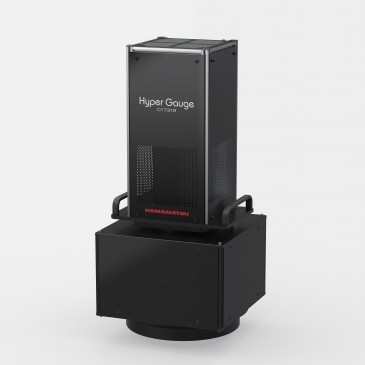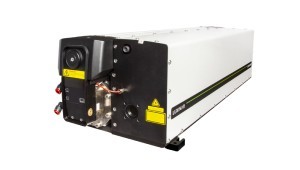
Zero Point Motion is a UK-based start-up developing chip-scale optical sensors for precision positioning & navigation. In this interview, Jose Pozo, EPIC’s CTO, talked to CEO Dr Ying Lia Li about her experience building DPSS lasers and how it led to the launch of a company to commercialize optomechanics.
Early career
In the 1990s, Lia’s parents moved from China to each pursue PhDs in mechanical engineering at Bristol University (UK), and as her parents couldn’t afford babysitters, Lia spent most of her early childhood in the engineering labs of the university. Not surprisingly, when the time came for Lia to go to a university herself, she opted for a change of campus, and attracted by the excitement of London and the reputation of Imperial College London (ICL), she embarked on an MSci in Physics.
In the first year, Lia found it difficult to adapt to the fiercely competitive academic environment at ICL and the pressure to learn quickly. She was worried about making mistakes and began to doubt her skills, especially after failing some exams. As a way of coping and improving her mental health, she threw herself into social activities working for the university’s radio station and Alternative Music Society. This provided her with a community of like-minded scientists who helped boost her confidence, and in 2010, she graduated with a 1st class honours degree.
After graduating, Lia continued working on her final year project building DPSS lasers with Prof Mike Damzen in the Non-linear Optics group at ICL - lasers became her obsession. Instead of going into a PhD, she obtained a research role in industry. For the next two years, she worked as a research scientist at BAE Systems in their Advanced Technology Centre. Lia worked on optical fiber systems, laser modelling and developing fiber polishing kits. She invented a type of chip-assisted plastic optical fiber printing method (patents granted in US & UK), and also worked in the clean room creating silicon gyroscopes and pH sensors. In 2012, she decided to take more research risks and returned to academia to start a PhD in experimental Quantum Physics at University College London (UCL).
PhD
Her research topic was optomechanics, which involved experimentally levitating and cooling the motion of microspheres as well as cooling the motion of clamped structures like cantilevers. The key with optomechanics is to use an optical resonance that is coupled to mechanical motion, for example, LIGO is an optomechanical system able to detect gravitational waves but on the large scale. The aim was to reach a micromechanical quantum ground state by applying laser cooling techniques. Imagine these structures as the equivalent of a giant single atom where the center of mass position is quantised. Creating larger sized quantum objects would test the laws of quantum physics to their limits, redefining our understanding of gravity and quantum mechanics. In this project she had to develop a method for taking highly sensitive measurements and controlling the environment to eliminate decoherence and heating – the two biggest challenges in quantum experiments.
Dr. Ying Lia Li
In order to get to a quantum ground state, the system needs to be ultra-cold and although Lia managed to show reduction of the vibrational energy (the phonon occupancy), she found it wasn’t cold enough. Being so close but not quite over the finishing line, she decided to ignore the quantum properties and shake the experiment up and down to see if the system would respond to forced vibrations and accelerations. The result would be ground-breaking for her career, because she found that the optomechanical system was sensitive enough to detect micro changes in acceleration, such as changes in the earth’s gravitational field.
After her PhD, Lia continued as a quantum experimentalist winning two fellowships, one in 2017, from the Engineering and Physical Sciences Research Council (EPSRC) to explore sensor applications using whispering gallery mode resonances, and the other in 2019 from the Royal Academy of Engineering Intelligence Community to begin rapid prototyping of optomechanical sensors for quantum technologies.
However, as Lia points out, having to continually rely on competitive grants to fund research projects is precarious. Although the grants are enough to meet her salary and the fixed costs imposed by the university, they don’t cover equipment costs or costs for other researchers, which for quantum experiments can run into millions of pounds.
Knowing that these financial constraints meant that her days as a quantum experimentalist were numbered, as an alternative, Lia gave increasing thought to creating a start-up to commercialise optomechanics, specifically to fabricate high- performance chip-scale optomechanical inertial sensors for applications such as positioning & navigation and structural & health monitoring.
Zero Point Motion
As with many other developments in Lia’s career, Zero Point Motion happened by accident, when in in 2019, at The Bristol Quantum Information Technologies Workshop, she was invited by Andy Collins, the business developer for QTEC, to apply for QTEC - the university’s Quantum Technology Enterprise Centre incubator programme.
The rest, as they say, is history. Zero Point Motion was created in 2020 to develop low-cost, high-volume production of optical sensors based on a combination of MEMs and PICs to produce a photonic readout of the motion of MEMS test masses. The advantages of this technology are that the sensors can sense motion with up to 10,000x greater precision than smartphone sensors, with a roadmap into quantum sensing if needed.
Lia knew that achieving low-cost, high-volume production of optical sensors in Europe requires careful supply chain management because transitioning chip designs can be difficult between different size foundries.
Accordingly, she brought two experts on board: Gordon Aspin, who is now Executive Chairman, and Pascal Herczog who is now VP of operations. Both are seasoned experts in developing low power ASICs and wireless chip technologies for target markets like smartphones and automotive, with considerable experience in high volume chip design having both co-founded Cognovo, a spin-out from ARM. Gordon was CEO of Cognovo and Pascal the CTO.
The aim is to get products out into the market as soon as possible and to generate revenue. As a first step, they created a road map for the product lines they wanted to release as well as a few backup plans in the event they needed to pivot quickly due to a technique, method or fabrication step not working as expected.
The future
In the next five years, the company aims to have its own lab and office facilities with a workforce of around 20. And as they will be using the existing PIC, MEMS and ASIC supply chain, Lia is confident that the performance benefits from using integrated silicon components will fulfil market demand in navigation and control. Although the quantum community is a strong early adopter for their devices, Lia is aware of the need to also reach out to the engineering and navigation community, particularly manufacturers of drones and robotics.
The aim is not to customize too much because it can inflate the cost of the sensor. Instead, in the short term, they want to create a generic line of sensors that can be co-developed not by changing the sensors but by adding some firmware or adjusting the algorithms according to the application.
Their goal is to produce two types of sensors with different performance levels. The first is a high performance sensor for applications where movement is constrained or controlled, such as image stabilisation, sports monitoring or industrial drones, while the second is designed for high-precision position tracking over longer durations without GPS such as autonomous or indoor navigation, potentially scaling towards the automotive market.
If you could start again, what would you do differently?
“One thing I’d do is start earlier. I know what I’m capable of achieving now, but at the end of my PhD in 2016 I never imagined myself as CEO of a company and I lacked the confidence to pursue it rigorously. What I needed was a sense of support but I had to meet a lot of people to find the right kind of support – one that was comforting too.”
“The other thing I’d do differently is spend less time trying to keep everyone happy and be more forward about what I want or who to bring to the company. There are huge amounts of interest in the start-up journey but also few people or investors who are willing support the first few rocky years. In academia many people are preoccupied with their next post-doc position or how to become a professor and very few want to derail those ambitions by taking a risk too.“
“Thirdly, I should have talked to other start-ups and learnt from others a lot earlier. At the start I was very worried that people would think I was being too ambitious. But then I realised, statistically, no one would start a company if there wasn’t a chance of reaching that ambitious goal, why not me?”
What are your words of wisdom for the next generation of entrepreneurs?
“First, take the time to know yourself and who you are and be prepared to adapt and to change the way you perceive yourself. Of course, you need to hold on to some core values because if you try to adapt too much, especially in this ruthless environment, you can destroy your soul!”
“Second, knowing yourself is particularly important in the area of risk appetite. Attitudes to risk can vary enormously. Some, especially those who don’t understand your technology, may try to push an overly risky strategy while others will want to be more conservative. For this reason, it’s important for you to have a strong sense of acceptable risks: if they’re too low, the company won’t grow but if you allow them to go too high with a lot of spin and hype, you may lose control.”
“Thirdly, as the saying goes, ‘hold on tightly and let go lightly’; that is, at the start, you need to be very protective of your energy and your vision, but as you let more people in and share equity, especially to investors and your employees, the company won’t be all yours anymore -you have to incorporate yourself into the company, not dictate it. Decisions will be made that benefit the company as a whole and you need to prepare yourself to let go of some control! The key thing is to see letting go as a learning experience; you’re actually letting more people in, and with the right company culture, your contributions won’t be erased.”
Written by Jose Pozo, Chief Technology Officer at EPIC (European Photonics Industry Consortium).





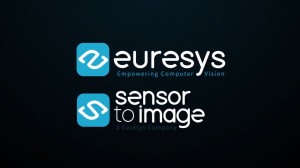


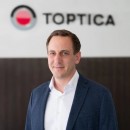
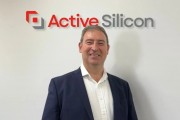
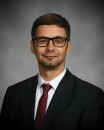

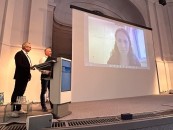
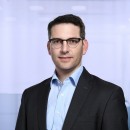
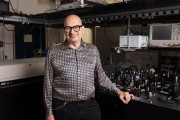
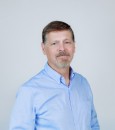


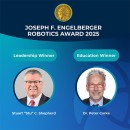
















 Back to Features
Back to Features